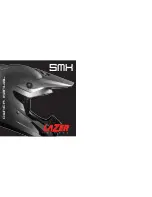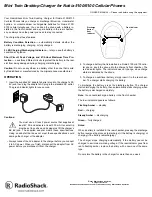
32
Dyno Graph Overview
1
2
4
3
OVAL (Force / Displacement)
QUADRANT #1
This is the beginning of the compression stroke. Where the graph crosses the zero
line (pounds) in quadrant #1 begins the compression stroke. Approximately the first
1/2" of displacement is formed with relation to the low speed bleed bypass. When
the shaft reaches a certain velocity, the low speed bleed bypass chokes off and the
compression valve stack begins to react.
QUANDRANT #2
This quadrant begins with the compression valve stack open. Where the graph
crosses the zero line (inches) in quadrant #2 is the maximum force produced by
the compression valving. As the shock approaches the full compression point, the
compression valve stack begins to close as it approaches the rebound movement.
QUADRANT #3
This quadrant begins with the shock at full compression and the compression valve
stack closed. Where the graph crosses the zero line (pounds) in quadrant #3
begins the rebound stroke. Approximately the first 1/2" of displacement is formed
with relation to the rebound bleed through the shaft and jet. When the shaft
reaches a certain velocity, the bleed chokes off and the rebound valve stack
begins to react.
QUADRANT #4
This quadrant begins with the rebound valve stack open. Where the graph crosses
the zero line (inches) in quadrant #4 is the maximum force produced by the
rebound valving. As the shock approaches the full extension point, the rebound
valve stack begins to close as it approaches the compression movement. At this
point the cycle starts over again in quadrant #1.
Force / Velocity Average
This graph shows the averages of the accelerating and
decelerating compression and rebound forces. It is a good
quick, general review of the shock curve, but is the least
accurate of the options displayed.
Force / Velocity
This graph displays the accelerating and decelerating
compression and rebound forces. Think of this graph as the
Force / Displacement graph (below) folded in half.
* Hysteresis is the gap between accelerating and decelerating
compression and rebound damping. It is affected by the type
of piston, the shims used and the relative position of high and
low speed adjusters. The bleed hole will close the gap or
soften the low speed forces.
2
1
3
4
Penske Racing Shocks uses SPA Dynamometers because of its versatility and low speed metering
and sample rates. Penske Shocks primarily uses the Force Average display, but SPA offers Decelerating
CD/Accelerating RD and Accelerating CD/Decelerating RD viewing options for all its graph displays.
Hysteresis
áá
Summary of Contents for 8900 series
Page 3: ...3 Notes ...
Page 29: ...29 Damping Adjustments Figure 3 Figure 2 ...
Page 34: ...34 Notes ...



































